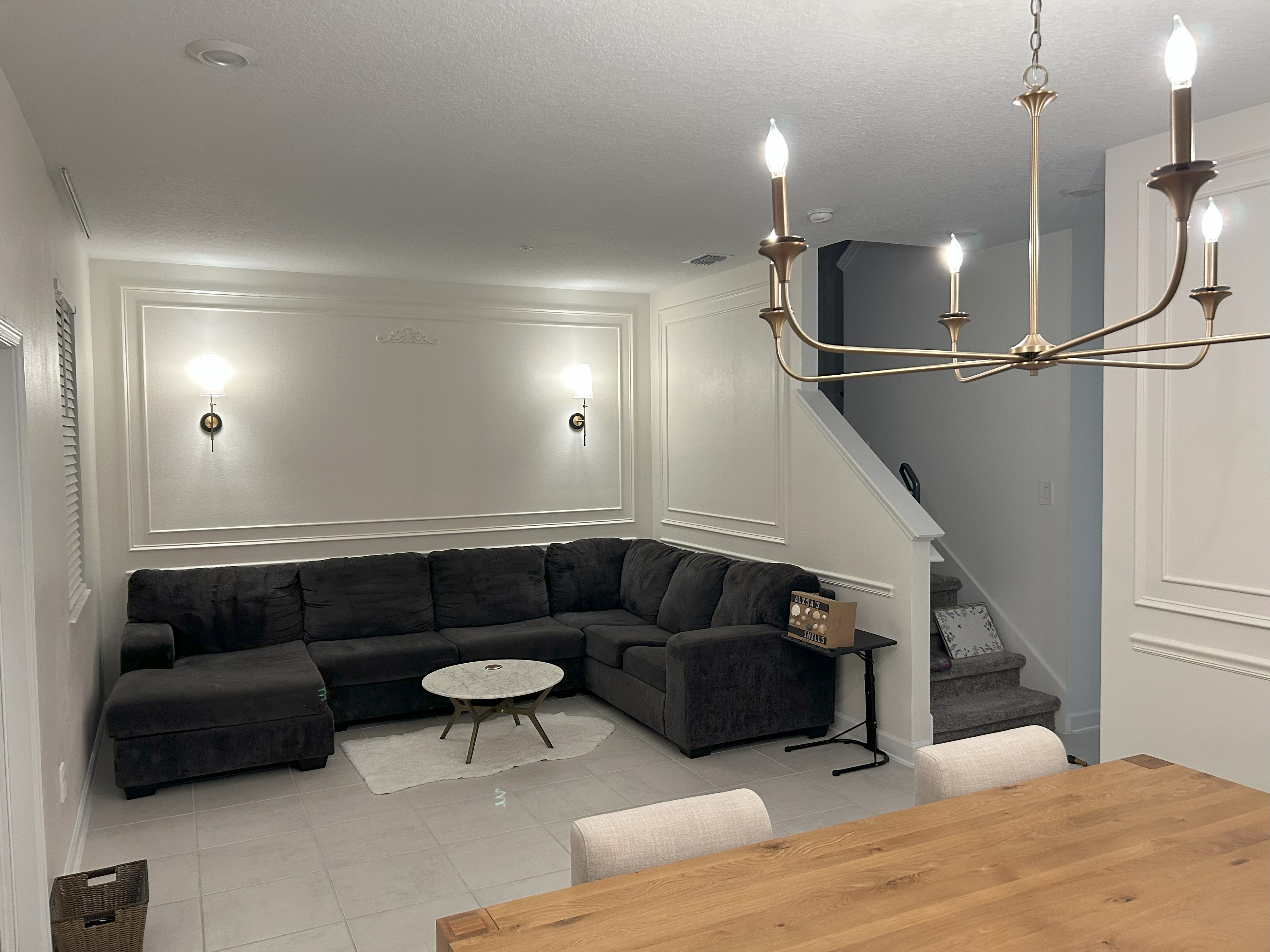The Unsung Hero of Home Design: Why Trim Molding is a Non-Negotiable Finish

In the world of home aesthetics, we often talk about big-ticket items: the flooring, the paint colors, the kitchen cabinets. But what truly elevates a room from "finished" to "custom-designed"? The answer is almost always **trim molding**.
Trim molding is the unsung hero of interior design—the precise architectural detail that frames your space, hides imperfections, and provides that final, polished layer of sophistication. If you've ever walked into a room and felt an immediate sense of quality, chances are, it had expertly installed and appropriately scaled trim.
Let’s break down the essential types of trim, explore their hidden benefits, and understand why this detail is a smart investment in your home.
The Big Four: Essential Types of Interior Trim
Trim is more than just baseboards. It includes a variety of profiles, each with its own function and visual impact.
1. Crown Molding
- **Where it goes:** Installed where the wall meets the ceiling.
- **The impact:** It draws the eye upward, softening the hard 90-degree angle and creating the illusion of height and grandeur. It is the signature of an elegant, finished space.
2. Baseboards (Base Trim)
- **Where it goes:** The trim that runs along the bottom of the wall, meeting the floor.
- **The function:** Beyond aesthetics, baseboards are crucial for hiding the gap between the wall and the flooring and protecting the drywall from scuffs and kicks. Taller baseboards are a modern trend that adds significant visual weight.
3. Casings (Door and Window Trim)
- **Where it goes:** Frames the perimeter of doors and windows.
- **The function:** Casings cover the gap between the window or door frame and the wall. More importantly, they give your openings depth and definition, turning a simple cutout into a **framed architectural feature**.
4. Chair Rail
- **Where it goes:** A horizontal trim piece installed about one-third of the way up the wall (typically 30 to 36 inches from the floor).
- **The function:** Originally used to protect walls from the backs of chairs, it now serves as a fantastic decorative divider, often used to transition between different wall treatments.
Why Trim is a Must-Have, Not a Maybe
Beyond simply looking good, quality trim molding offers tangible benefits for your home:
1. It Hides the Flaws
No home is perfect. Trim is a clever, functional solution for concealing the small gaps and uneven lines where disparate materials meet (wall to ceiling, wall to floor, wall to door frame). It instantly makes any room feel cleaner, more precise, and professionally built.
2. It Protects Your Walls
Baseboards absorb the impact of vacuum cleaners and shoes, while chair rails prevent furniture damage. In high-traffic areas like hallways and dining rooms, trim acts as a **durable barrier**.
3. It Boosts Perceived Value
Real estate professionals consistently agree: well-chosen, quality trim and millwork increase a home’s **perceived value**. Buyers see it as a sign of craftsmanship and attention to detail. Investing in custom or even just taller, bolder trim in key areas is one of the easiest ways to improve your home’s market appeal.
4. It Defines the Architectural Style
Trim is the design language of your room. **Traditional homes** look best with ornate, layered, or multi-piece trim. **Modern or Contemporary homes** are best served by simple, flat, wide profiles with clean lines.
Choosing Your Material
The most common materials for molding are:
| Material | Pros | Cons |
|---|---|---|
| **Solid Wood** | Extremely durable, can be stained or painted, and is the highest quality. | Most expensive, susceptible to moisture damage. |
| **MDF** | Most budget-friendly, pre-primed, and has a perfectly smooth finish for painting. | Less durable, can swell if exposed to high moisture (avoid in wet areas). |
| **Polyurethane / PVC** | Lightweight, completely moisture- and pest-resistant, won't warp or rot. | Can be more expensive than MDF, lacks the natural feel of wood. |
Conclusion: Don't Underestimate the Finish
If you’re planning a renovation, do not treat trim as an afterthought. It is the finishing detail that ties all your design elements together and provides the visual punctuation that makes a room feel complete. Invest in the right profiles, ensure clean installation, and watch your space transform into a high-end, custom environment.